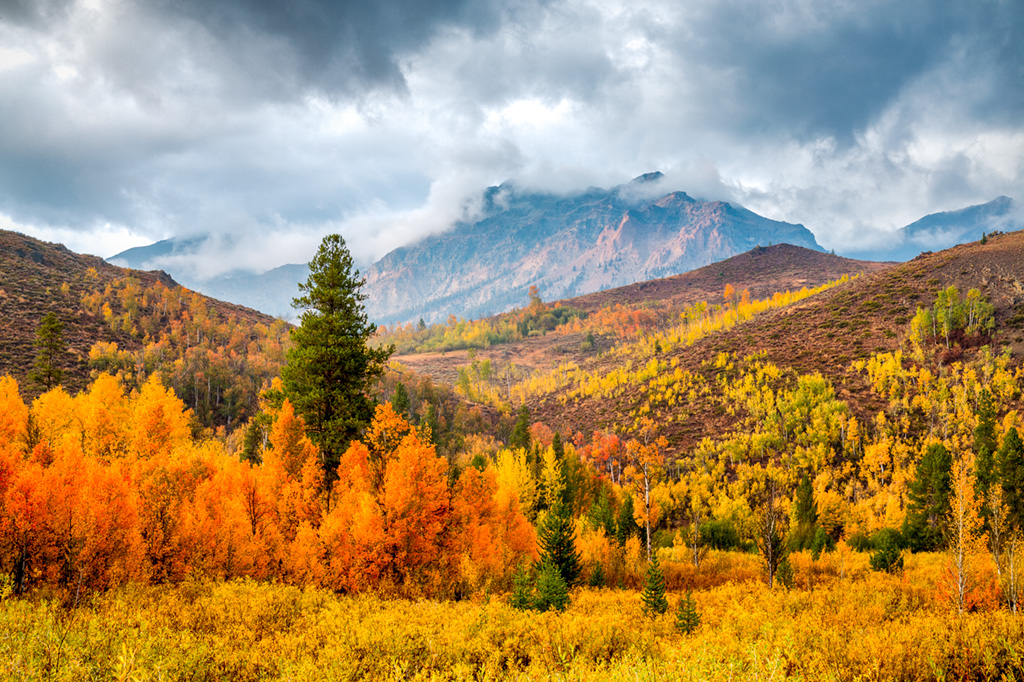Trees are the breath of planet earth.
They are vital to life on land, acting as air purifiers that filter polluted air by absorbing carbon dioxide and returning oxygen into the atmosphere. Trees also provide shade and shelter for birds and animals, they offer a break from wind and can help with sound pollution. In fact, according to the United States Department of Agriculture, a properly designed buffer of trees and shrubs reduces the sound pollution by 10 decibels or about fifty percent as received by the human ear.
Trees act as rainmakers. Evaporation from the leaves brings about the formation of clouds, the clouds cause rain and irrigate the land, filling our rivers and streams and carrying water down from our forests to the sagebrush dessert and scrub of Idaho’s lower elevations. Trees also help stabilize the soil. Roots of trees keep the soil intact and decrease soil erosion.
Trees are good for the body, and the soul. They’re essential to the air we breathe and they provide a majestic and stately symbol of strength and perseverance in the face of adversity. Franklin D. Roosevelt, who carried the nation through World War II, recognized the importance of our forests as a symbol to the American people when he said, “A nation that destroys its soils destroys itself. Forests are the lungs of our land, purifying the air and giving fresh strength to our people.”
As symbol of enduring strength, trees are longstanding and timeworn, with some of the oldest trees on earth reaching ages of more than 9,500 years. One of the oldest trees in Idaho is just outside the little town of Elk River, in the panhandle of Idaho, where the Giant Red Cedar National Recreation Trail leads hikers to a Western red cedar that is more than 18 feet in diameter, 177 feet tall and over 3,000 years old.
Peter Wohlleben, the forester and author of The Hidden Life of Trees, asserts that trees operate on a different time scale, with electrical impulses that pass through their roots moving at the slow rate of one third of an inch per second. Wohlleben puts forth the hypothesis that trees are able to communicate, a belief shared by indigenous cultures in the world from Australia to the Americas.
Science concurs, and scientists in the Harz mountains in Germany have discovered that most individual trees of the same species growing in the same stand are connected to each other through their root systems. Through studies at the university of Turin, Massimo Maffei asserts that plants and trees are capable of distinguishing their own roots from the roots of other species and even from the roots of related individuals.
Wohlleben writes about this in his book, stating that: ”It appears that nutrient exchange and helping neighbors in times of need is the rule, and this leads to the conclusion that forests are superorganisms with interconnections much like ant colonies.”
“The thing that surprised me most is how social trees are,” asserts Wohlleben. “I stumbled over an old stump one day and saw that it was still living although it was 400 or 500 years old, without any green leaf. Every living being needs nutrition. The only explanation was that it was supported by the neighbor trees via the roots with a sugar solution. As a forester, I learned that trees are competitors that struggle against each other, for light, for space, and there I saw that it’s just vice versa. Trees are very interested in keeping every member of this community alive.”
It is said that the Oglála, one of the seven tribes of the Lakhota people of North America, believe that the cottonwood could be heard saying prayers to the Great Spirit when the wind blew. Forests cover roughly thirty percent of the world’s land area and perhaps, in these uncertain times, we can all learn a bit more about life on earth by spending more time listening for the whisperings of the trembling leaves and sweeping pine boughs of the great trees of the earth.
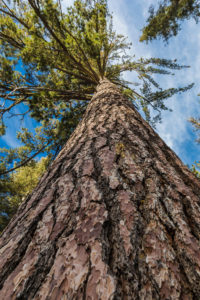
Western White Pine (Pinus monticola)
Family: Pinaceae
Height: 120-180 feet
Lifespan: 350 years
Needles: Bundles of 5, 2-4” long
Bark: Dark Gray. Broken into small, square blocks on mature trees.
Fact: Became the Idaho state tree in 1935. Monticola means “of the mountains.”
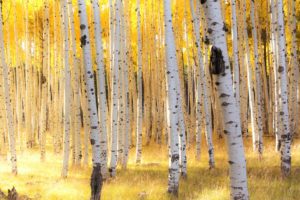
Quaking Aspen (Populus tremuiloides)
Family: Salicaceae
Height: 50-60 feet
Lifespan: 120 years
Leaves: 1-3” long, broad, egg-shaped edge, finely sawtoothed. Upper surface shiny green, dull green beneath.
Bark: Smooth, whitish and thin, becoming dark gray with age.
Fact: Aspens grow in colonies called “clones” because they are genetically identical individuals.
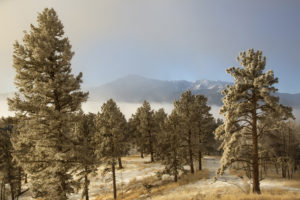
Ponderosa Pine (Pinus ponderosa)
Family: Pinaceae
Height: 120-180 feet
Lifespan: 300 years
Needles: Bundles of 3, 5-10” long
Bark: Black on young trees, turns yellow-brown with large scale plates on mature trees.
Fact: Also known as yellow pine, bull pine or blackjack pine. Ponderosa means “large” and these stately trees are the only long-needled pine native in Idaho.
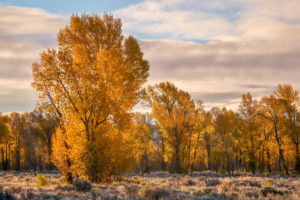
Black Cottonwood (Populus trichocarpa)
Family: Salicaceae
Height: 60-120 feet
Lifespan: 120 years
Leaves 3-6” long, dark green, egg-shaped, tapering to a point and notched.
Bark: Tawny yellow to gray, smooth on young trees, turning dark gray and deeply furrowed on mature trees.
Fact: Idaho’s largest native broadleaf tree. The Big Wood, Little Wood and Boise rivers were all named for dense stands of cottonwood found by early settlers.
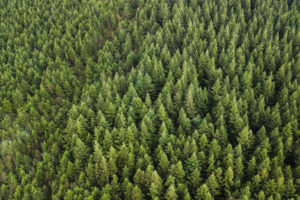
Douglas Fir (Pseudotsuga menziesii)
Family: Pinaceae
Height: 110-170 feet
Lifespan: 300 years
Needles: Single needles, about 1” long, flat and soft to the touch
Bark: Dark gray brown, corky looking. Deeply furrowed with rusty red interior in mature trees.
Fact: Douglas fir is the most valuable timber tree species in the U.S.
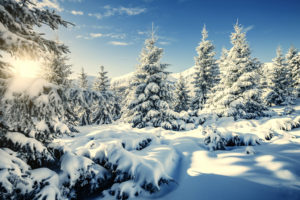
Blue Spruce (Picea pungens)
Family: Pinaceae
Height: 80-120 feet
Lifespan: 600-800 years
Needles: Bluish to silvery-blue needles with sharp tips, cones always hang down.
Bark: Scaly and grey to red brown, shallow furrows.
Fact: One of the least common naturally occurring trees in the state, yet planted in parks and backyards everywhere.


